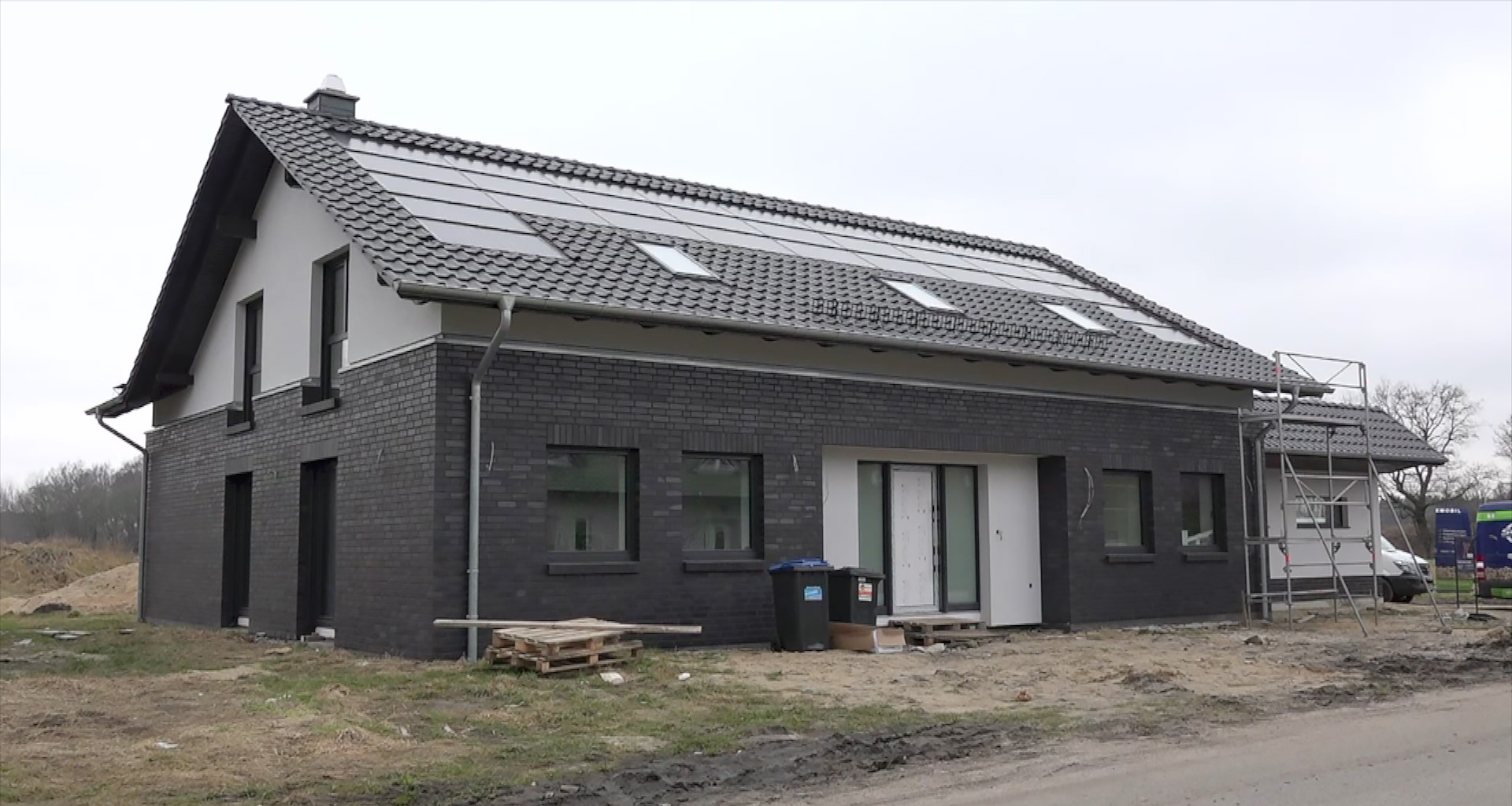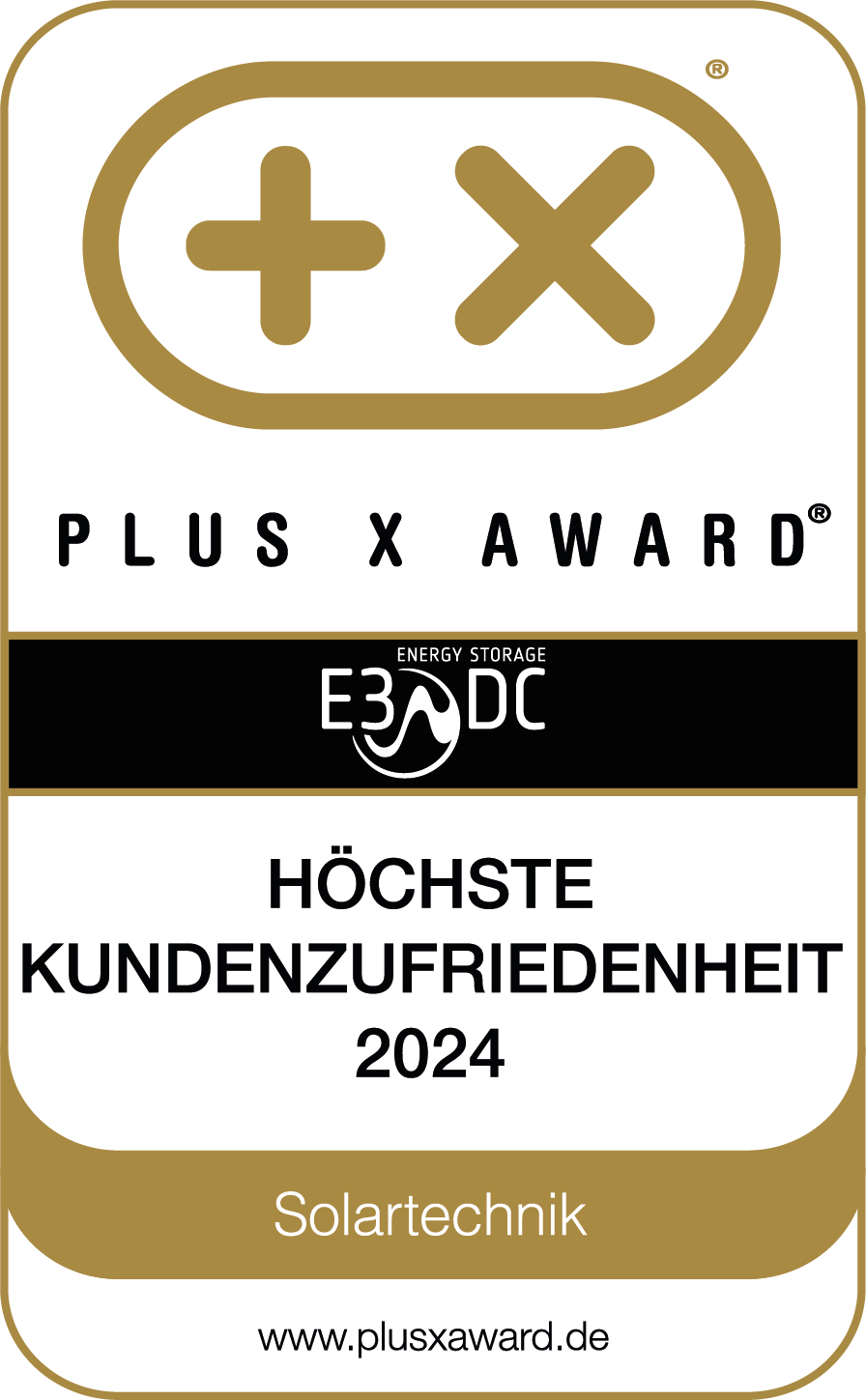
A prime example of sector coupling
A prime example of sector coupling
Stefan Korneck achieves 80 percent self-sufficiency with solar power
- System solution with E3/DC home power station, heat pump, wallbox and house automation
- PV system generates almost double the annual requirement
Facts at a glance
- Object: single family house, 265 m2 living space, year of construction: 2018
- Location: near Salzwedel, Germany
- Equipment: 18 kWp in-roof PV, home power station S 10 E Blackline, geothermal heat pump, central ventilation system, myGEKKO house automation, E3/DC Wallbox
- Energy requirement: 8,500 kWh/a for electricity, heat and electric mobility
- PV Generation: 16,500 kWh/a
- Autarchy: 80 % (forecast)
What could be more convincing than exemplary action? Solar expert and E3/DC partner Stefan Korneck has developed a comprehensive self-sufficient solution for his new private home: With a large PV system, E3/DC home power station, geothermal heat pump and charging station, he is aiming for a degree of self-sufficiency of 80 percent – with operating costs that are practically zero in the long term.
Stefan Korneck is one of the two managing directors of SCM Energy in Salzwedel (Saxony-Anhalt, Germany). To date, the company has installed more than 4,500 PV systems and numerous E3/DC home power stations in the region. Korneck‘s profession is self-sufficient energy supply: „It‘s all about independence, individually designed and long lasting.“The focus is often on the E3/DC home power station, with which customers can not only store their solar power, but also use it for heat generation and mobility according to their own priorities.
Energy efficiency meets technology
Korneck reports: „I wanted to realize everything that is technically possible today.“ The single-family house with 265 m2 of living space meets a very high energy efficiency standard and is designed for a very low heat requirement in terms of building physics: „This standard is no longer a future, it is reality“. The electricity requirement of the family was calculated at 8,500 kWh including the heat pump, almost 7,000 kWh of which are to be fed into the appliances via the home power station, while the residual electricity requirement of around 1,500 kWh via the ZERO contract from E3/DC really does not mean a blow to the office: Korneck calculates costs of € 390 per year.
Integrated in roof areas facing east, south and west, module areas with a total solar power output of 18 kWp were installed. Energy production thus runs from early to late with the sun‘s course and, according to Korneck‘s calculations, forms the basis for a degree of self-sufficiency of around 80 percent over the entire year. At the same time, the PV output fits perfectly with the E3/DC home power station (S10 E Blackline), which with the integrated PV inverter and energy management feeds solar power into the domestic grid and stores energy for the evening and night – the storage capacity is almost 16 kWh. „For me, the home power station was the most important product in the overall installation.“
Convenience is also available for savers
The combination of a geothermal heat pump and a central ventilation system with heat and moisture recovery ensures a good and healthy room climate. The heat pump covers the heat requirement and can even cool on summer days using underfloor heating. The ventilation regulates the air in the room and recovers 90% of the heat. However, the system only really becomes complete with the E3/DC wall box for charging the electric car and – if customers like Stefan Korneck love maximum comfort – with my- GEKKO home automation.
Today, the clients are not only interested in independence and cost savings, but also in quality of life and comfort: „Customers want this combination, and we can show that it can be implemented without any problems today. We have the technology and the framework conditions are in place. There is no reason not to do it“. In combination with the energy management of the home power station, the home automation system meets the comfort wishes of the residents, uses as much own solar power as possible and brings a high quality of life and maximum reduction of operating costs under one roof.
No more electricity costs
The forecasts for the house are very promising: at 16,500 kWh, the PV system‘s annual yield is 2 times higher than its consumption. Thus, even in the winter months it achieves high self-sufficiency values and a quite high balance sheet surplus, which earns more money through the German feedin tariff than has to be paid for the remaining electricity. At least from an economic point of view, this surplus is precisely the contribution that turns a self-sufficiency of around 80 % into a complete autarchy. On balance, Stefan Korneck will no longer have to spend any money on electricity – on the other hand, he will still generate income. Maybe, he can probably not get enough of these, so an expansion of the plant on the outbuilding including integration into the S10 system is concretely being planned.
